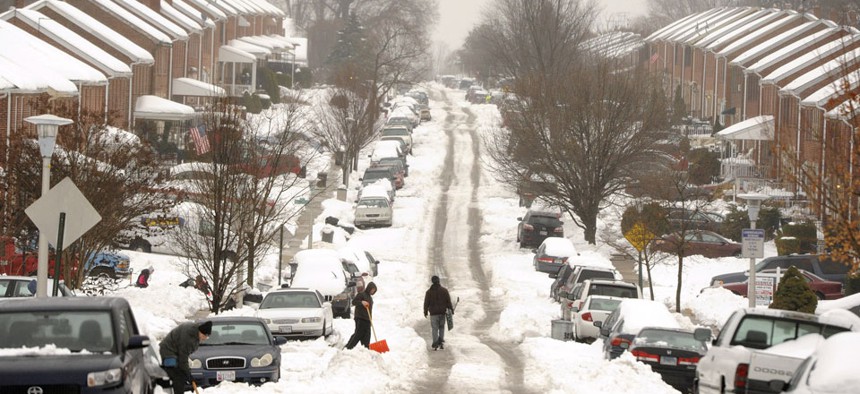More Snow Days No Longer Means Less Work for Feds
Dramatic growth in telework keeps federal employees are on the job even when they’re out of the office.
A few days every winter, a nearly audible buzz emanates from federal employees who wait like schoolchildren to hear the magic words: Federal offices in the Washington, D.C. area are closed.
Thursday marked the third closure of D.C.-area federal offices during the 2013-2014 winter, more than the previous three winters combined.
The Office of Personnel Management has offered unscheduled leave or telework to employees in the region on five occasions so far during the 2013-2014 winter season, more than in any single year during the last two winters. Since Snowpocalypse forced the government to shut down for five days in December 2009 and February 2010, the government closed just once in March 2013 due to snow.
However, snow days often no longer equate to a vacation day. Increasingly, when an agency is closed, employees with telework agreements are expected to conduct their work from home. The popularity of telework has skyrocketed in recent years, thanks in large part to the 2010 Telework Enhancement Act.
About 30 percent of eligible employees teleworked at some point during fiscal 2012, according to OPM data, up from 21 percent the previous year. The number of all federal employees deemed eligible for telework by their agency increased by 49 percent between 2011 and 2012.
The option to keep government offices open, but allow unscheduled telework, is new since 2011. That status, according to one region’s federal executive board, has allowed some agencies to keep facilities open while mitigating transportation risks.
Telework has become “much more important in ensuring continuity of government,” said Lisa Makosewski, the head of Philadelphia’s FEB. The Philadelphia region closed for just the second time this winter on Thursday, despite receiving a record amount of snowfall. In previous winters, that total would have likely been higher, Makosewski said.
Federal executive boards play a key role in storm situations outside the Beltway and throughout the country. Makosewski said the National Weather Service briefs her three or four days in advance of a storm, which enables her and her team to keep agency heads and federal workers in the region informed. The FEB shares information on emergency preparedness -- such as communication plans, evacuation routes and what to put in emergency kits -- through literature, websites and social media.
OPM coordinates a national network of 28 FEBs throughout the country, based in regions with high concentrations of federal employees.




